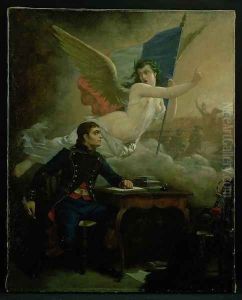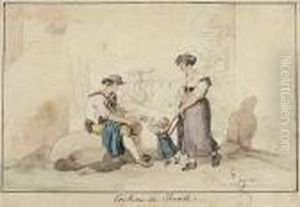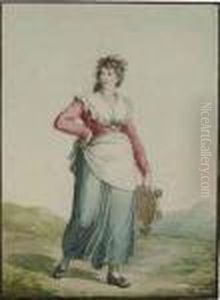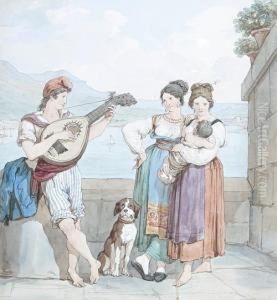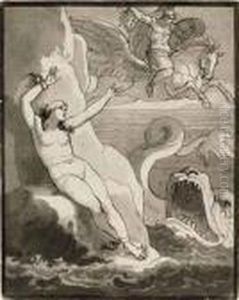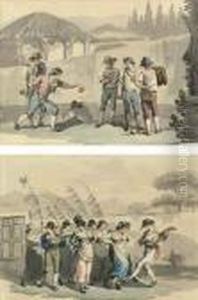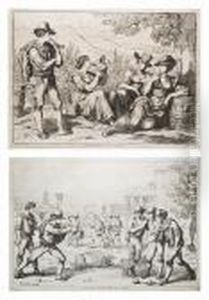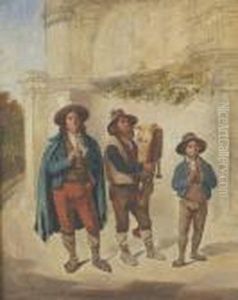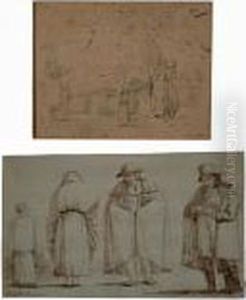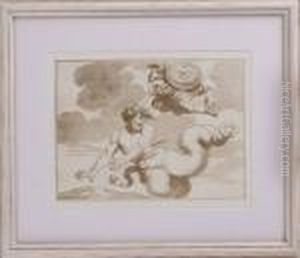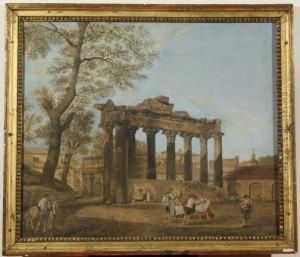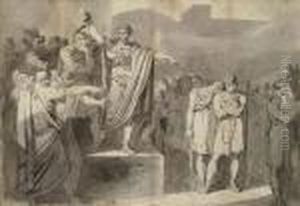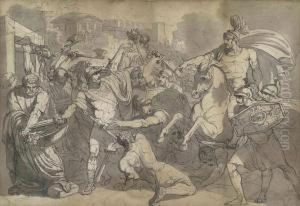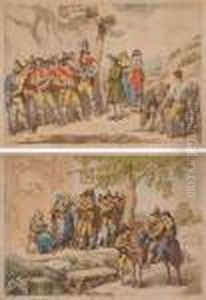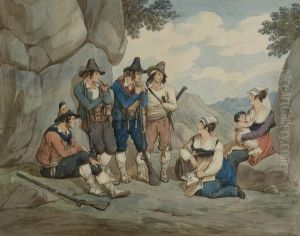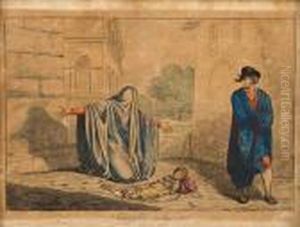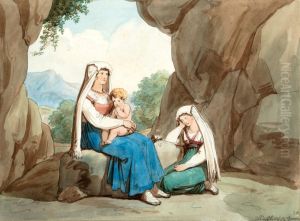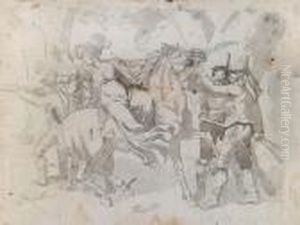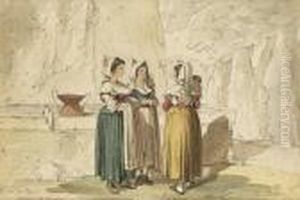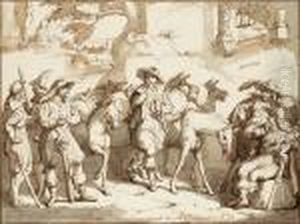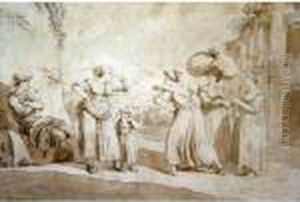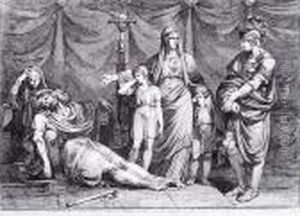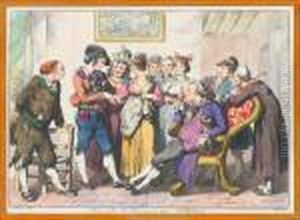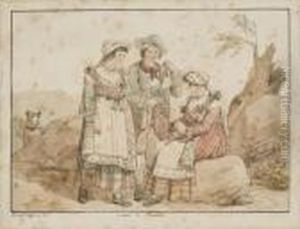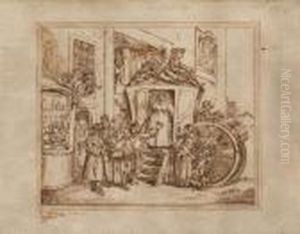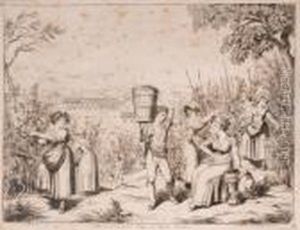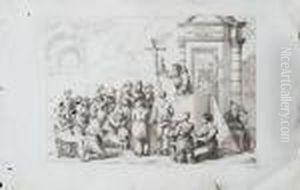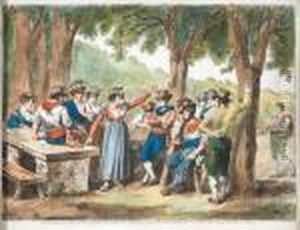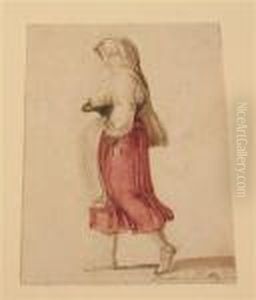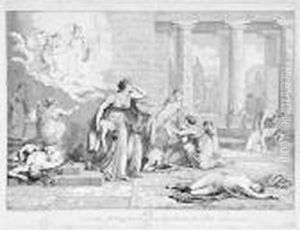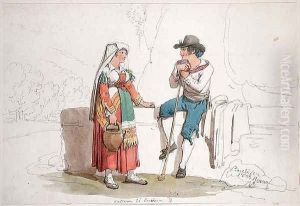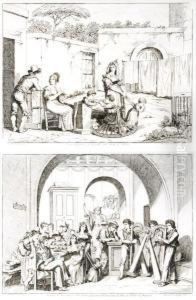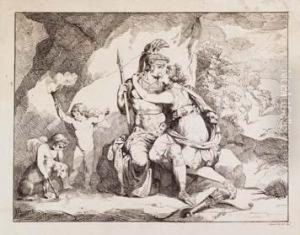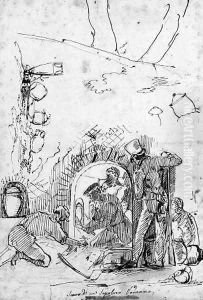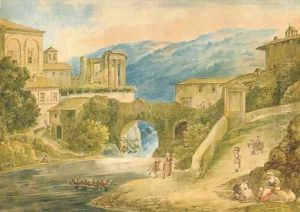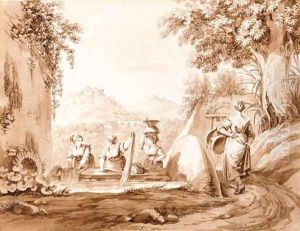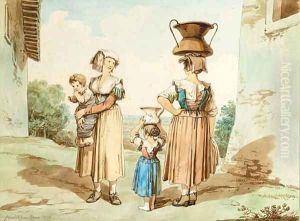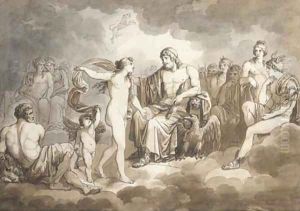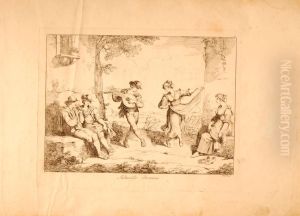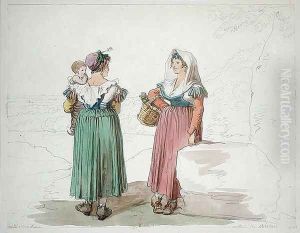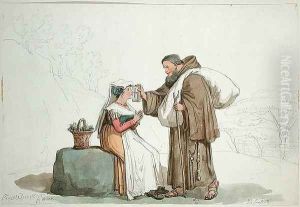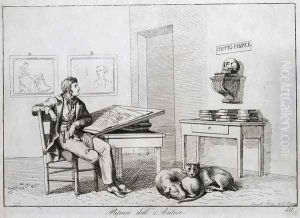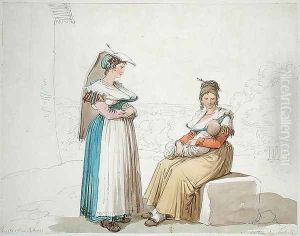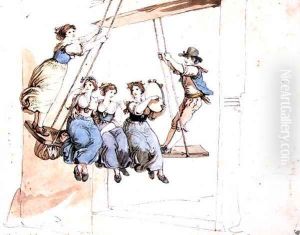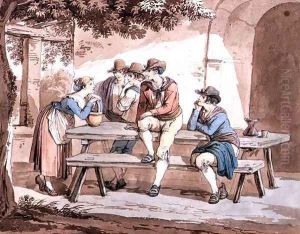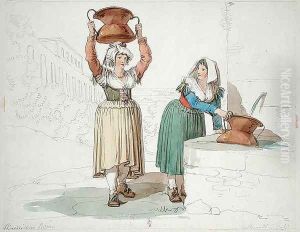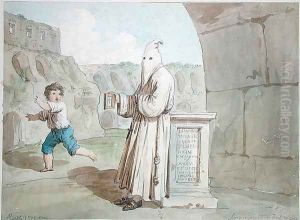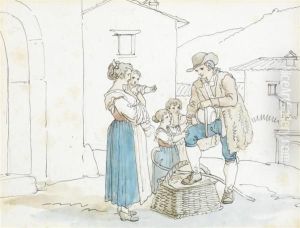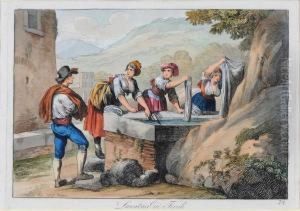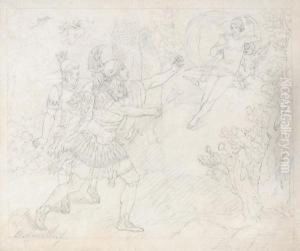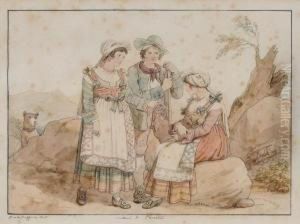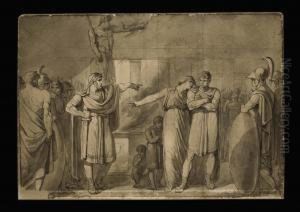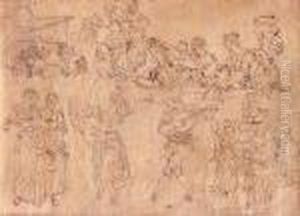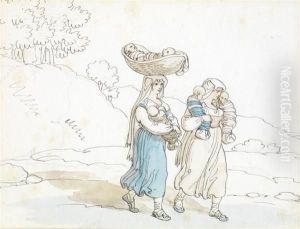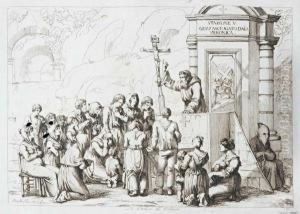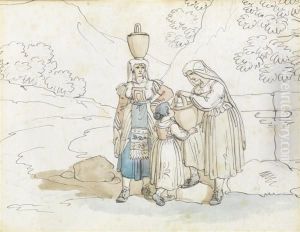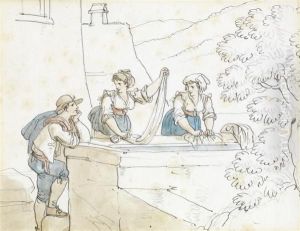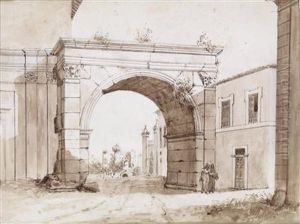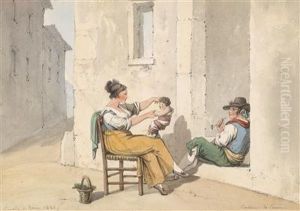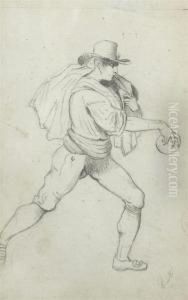Bartolomeo Pinelli Paintings
Bartolomeo Pinelli was an Italian illustrator and engraver, born on November 20, 1781, in Rome. He is best known for his lively and detailed depictions of Roman and Italian popular life, customs, and folklore, which have become invaluable records of the early 19th century's social history. Pinelli's work is characterized by dynamic compositions and a keen eye for detail, capturing the vibrancy of everyday scenes with a particular focus on the costumes, traditions, and characters of the lower classes.
Pinelli showed an early talent for drawing, and his education in art began under the guidance of his father, who was a minor painter. He further honed his skills at the Accademia di San Luca in Rome, where he studied under the neoclassical sculptor Antonio Canova and the painter Domenico Corvi. Despite the classical training, Pinelli's interest lay more in depicting contemporary life than in classical or mythological subjects. His illustrations, often created as series of etchings, were published in various books and albums, including 'Costume di Roma e suoi Contorni' (Costumes of Rome and its Surroundings) and 'Storia Romana' (Roman History), which were popular with both Italian and foreign tourists.
Pinelli's work served as a bridge between the neoclassical and romantic movements in art. While his technique and attention to detail were rooted in neoclassicism, his subjects and their treatment were romantic in essence, focusing on the picturesque and the emotional aspects of daily life. This unique blend made his work highly popular during his lifetime and left a significant legacy in the field of Italian art.
Throughout his career, Pinelli remained closely connected to his native Rome, drawing inspiration from its streets, its people, and its ancient ruins. His depictions of folk tales, historical scenes, and local customs were not only artistic achievements but also important anthropological records, offering insights into the socio-cultural aspects of early 19th-century Italian life.
Bartolomeo Pinelli died on April 1, 1835, in Rome. His contribution to Italian art, particularly in the genre of genre painting and illustration, continues to be celebrated for its vivid portrayal of a bygone era. His works are preserved in various museums and collections around the world, testament to his enduring appeal and the universal language of his art.
